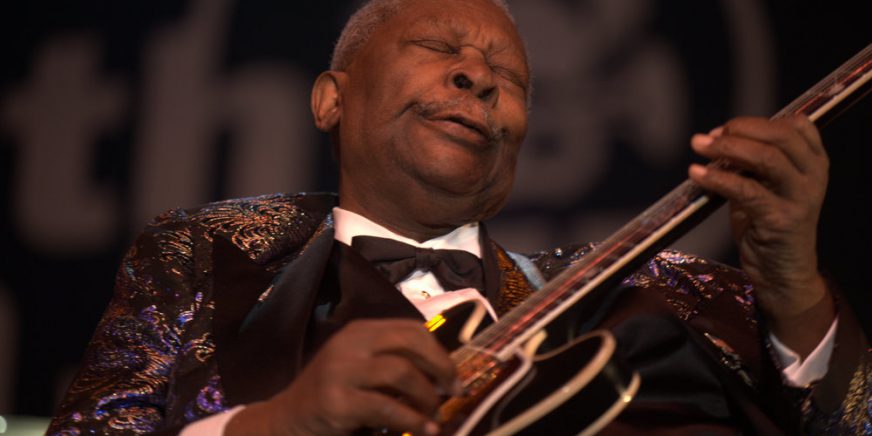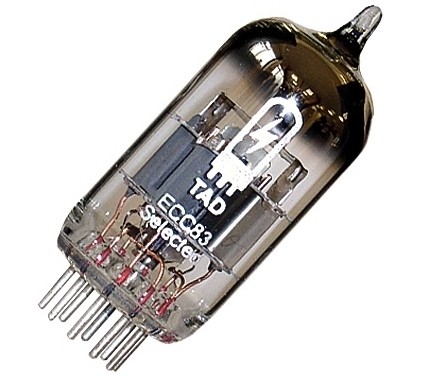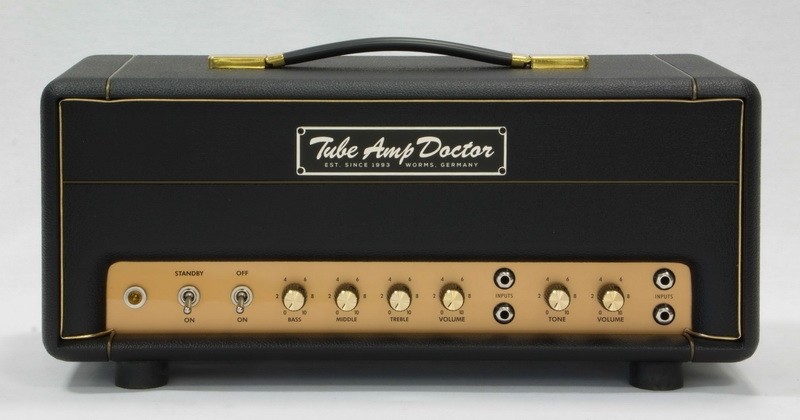As the father (or mother?) of most modern music styles, blues continues to enjoy great popularity today! Soul, jazz, rock, and pop enthusiasts find familiar elements in the music originating from the southern United States. In addition to special rhythmic and melodic features, it is the sound of blues music that makes it a cornerstone of modern music. In this article, we will explore the essential components of the blues sound and reveal which guitar amplifier is particularly well-suited for blues.
Blues music – a brief introduction
Blues music emerged around the turn of the 19th and 20th centuries in the United States. Particularly among the African-American population, the music genre quickly developed, bringing together various elements from gospel, spirituals, and work songs in a modern instrumentation.
The term of the music genre also alludes to the melancholic mood of the blues: in the English-speaking world, the expression “feeling blue” or having the “blues” means experiencing melancholy or sorrow.

This melancholic mood of the music is traditionally supported by corresponding lyrics. The songs, often in a narrative form, initially frequently addressed racial discrimination and the challenging lives of African-Americans in the USA. Over time, additional themes were added. Discrimination in general, financial hardship, infidelity, betrayal, and unrequited love still remain among the most important themes of the blues.
The guitar is considered the most crucial instrument in blues. While acoustic guitars were initially predominant, the introduction of mass-produced electric guitars by Fender led to a shift in perspective. Today, the blues sound is hardly imaginable without an electric guitar and a tube amp.
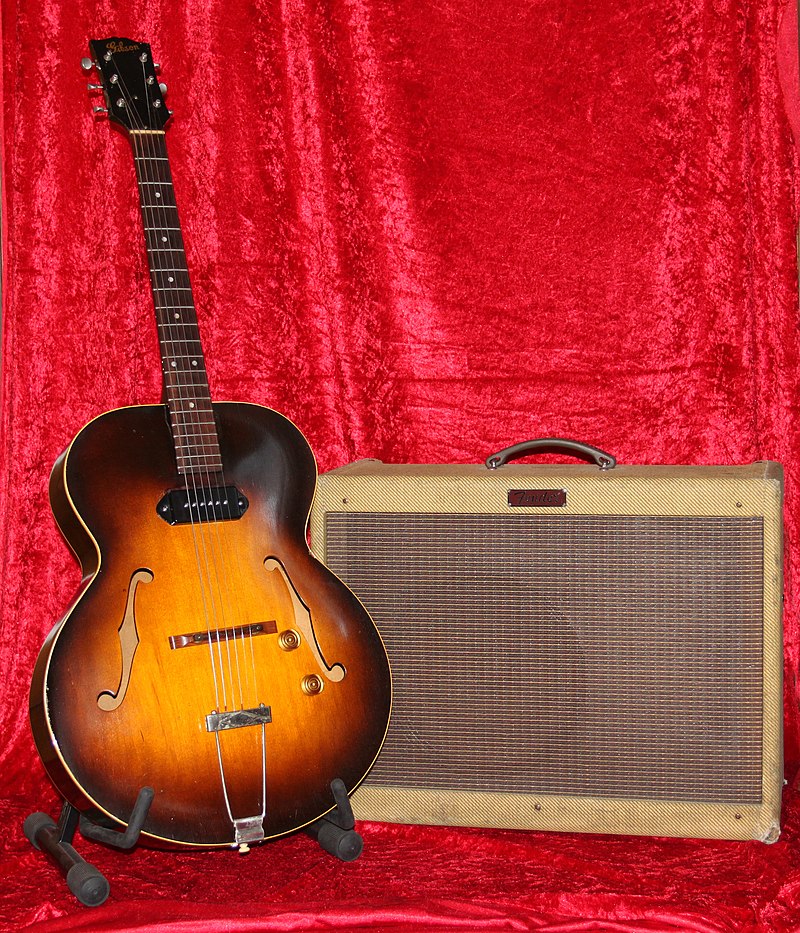
The sound of the electric guitar in blues music
Of course, there is no single “blues sound” – nevertheless, some sound variations have emerged as fundamental over time. For simplicity, we categorize the guitar sound into three gain stages:
Clean blues sound
Since even the acoustic guitar in blues music is rarely played entirely clear, i.e., clean, the term “Clean” is deliberately vague. When paired with a tube amp, it usually suffices to slightly engage the tubes by reducing the volume pot on the guitar. By adding reverb and modulation effects, this setting can be used for quieter passages.
Crunch
Both in the style-defining riffs and in solo passages, a properly dimensioned crunch sound excels in blues rock. There are two ways to achieve the desired effect. Those who want to play with the dynamics of the tube can obtain a substantial amount of “dirt” by turning up the volume pot at high volume. Effects pedals can also be used: a Tubescreamer or other overdrive pedal can drive the tube with a foot press.
Lead
Less frequently used than in rock and metal, but still essential in blues guitar, is the lead sound! A more distorted variant of the crunch sound stands out more clearly against other instruments in the corresponding passages and can further alter the emotional level of the song.

Guitar amplifiers for blues – the right equipment for the sound
B.B. King, Eric Clapton, Buddy Guy, Muddy Waters… The list of legendary blues guitarists is long and can probably be endlessly supplemented. And even though each of these guitar virtuosos has developed their own setup, there are favorites. Whether there can be identified a single best guitar amplifier for blues is debatable – there are at least some conceivable candidates. But more on that later.
Generally, among blues guitarists, amplifiers have prevailed that focus less on brute power and more on balanced and musical sounds. Combos are much more common on stage than full-sized half or full-stack tube amps. The reason for the frequent use of less powerful amps lies in the dynamic sound control described above: too much power reserve would push the amp’s headroom too much – the desired crunch would only set in at excessively high volumes.
Of course, there is no real answer to the question of whether there can be identified the best guitar amplifier for blues: whatever pleases is allowed. Accordingly, many examples of historically best guitar amplifiers for blues can be found in the history of music.
Best guitar amp for blues – historical examples
To approach the question of which tube amp can be called the best guitar amplifier for blues, let’s look at the preferred models of famous guitarists. This way, we can extensively listen to the tonal characteristics of the amps during a relaxed blues evening.
Fender Bassman – Buddy Guy
The Bassman was produced by Fender between 1951 and 1985, and in recent times, a 1959 reissue variant has been introduced. In its most well-known version, the combo relies on four 10″ speakers and delivers its sound, among other things, through robust 12AX7A tubes.
If you want to enjoy the Bassman as a guitar amplifier for blues, you can listen to the earlier works of the master – until the 1980s, a 1959 Fender Bassman was Buddy Guy’s trusted amplifier.

Fender Super Reverb – Stevie Ray Vaughan
As a classic Fender amp from the Blackface era, the full tube provides about 45 watts of power from 12AT7 and 12AX7A-C. With the use of four 10″ speakers, the sound operates very three-dimensionally, and the dynamic nature of the circuit means that the volume pot on the guitars being used is significantly more engaged.
The Super Reverb had its heyday in SRV’s career during the early 1980s. As venue sizes increased, a whole series of amps developed from a single amp. Stevie Ray Vaughan played the Super Reverbs until the 1990s, then switched to a ’59 Bassman Reissue amplifier.
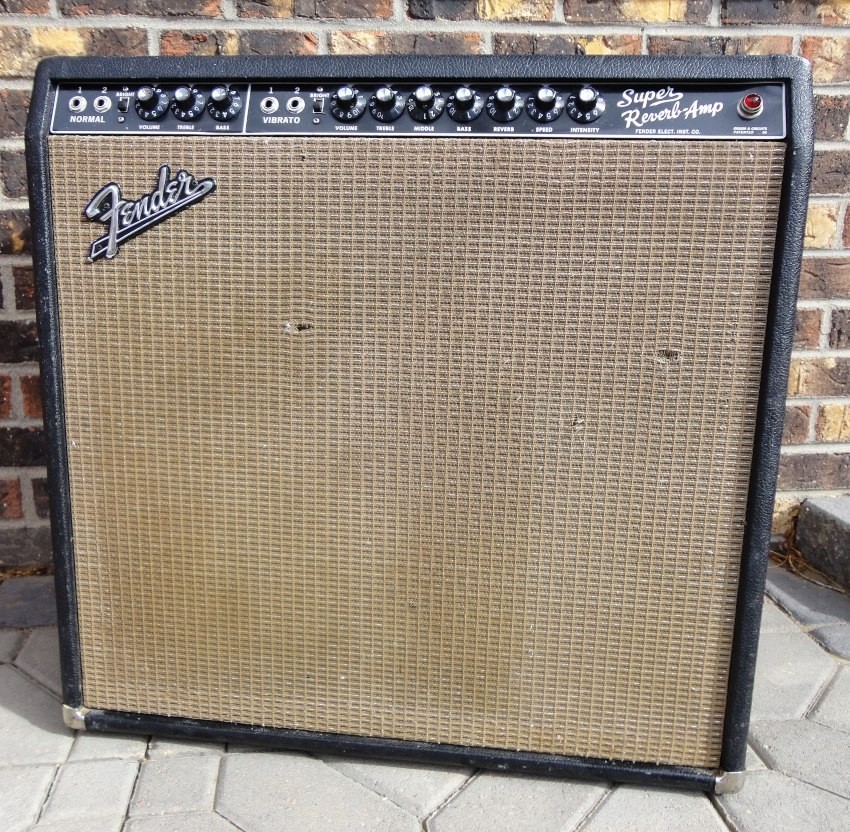
Marshall Bluesbreaker Combo – Eric Clapton
Known as the Marshall MR1962 in civilian life, the Bluesbreaker represents the archetype of the Marshall blues guitar amplifier. Two 12″ Celestions are driven by two KT66 power tubes, and the sound is delivered by four ECC83 tubes.
A bit of history: The name “Bluesbreaker” was given to the tube amp for its use on the “Beano Album” by John Mayall’s Bluesbreakers. Eric Clapton can be heard with a Gibson Les Paul and the Marshall on that album – a delight for fans and newcomers alike – best guitar amplifier for blues or not.
Marshall Jubilee – Joe Bonamassa
After 25 years of work in the amplifier business, Marshall engineers created the Silver Jubilee Amp – with a silvery outfit and an elegant, chrome-shining control panel. Its close relationship with the JCM 800 series is recognizable in the circuit design – two EL34s in the power stage and ECC83s in the preamp make the sound of the tube as a guitar amplifier for blues unique.

Bonamassa is one of many big names who have fallen for the sound of the Jubilee. To experience the full force and diversity of the amp, one of the many live performances of the exceptional guitarist is recommended. Attention: The Jubilee is always the “main amp” – Bonamassa often uses other amps in the multi-amping process to change nuances of the tone.
______________________________________________________________________________________________________________________________
Image Sources:
Main Image (BB King): By Tom Beetz – https://www.flickr.com/photos/9967007@N07/6577873073, CC BY 2.0, https://commons.wikimedia.org/w/index.php?curid=19293981
John Lee Hooker, 1997: By I, Sumori, CC BY-SA 3.0, https://commons.wikimedia.org/w/index.php?curid=2328040
Ronnie Wood & Buddy Guy: By Alex G from Puteaux, France – Ronnie Wood & Buddy Guy, CC BY 2.0, https://commons.wikimedia.org/w/index.php?curid=65965723
1964 Fender Super Reverb (blackface): By GabeMc – Own work, CC BY-SA 3.0, https://commons.wikimedia.org/w/index.php?curid=31327256
Marshall Silver Jubilee combo : By Gavin Tapp – Marshall silver jubilee combo Uploaded by clusternote, CC BY 2.0, https://commons.wikimedia.org/w/index.php?curid=27398505
 Tubeampdoctor Magazin
Tubeampdoctor Magazin
